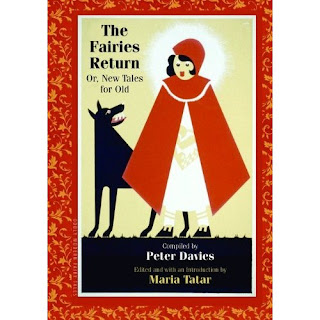I was reminded of this as I've been perusing The Fairies Return, because the book has so many examples of the different ways the same story can be told "over and over", yet with completely new life each time. If fairy tale retellings is itself a subgenre of fantasy, even within this category are many other sub-subgenres. All examples are found in The Fairies Return unless otherwise noted. These are just classifications I made up:
Expanded fairy tale: True folk tales have a very distinct style, they include the bare essentials of plot, and characters are never developed. Some authors will take those same essential plot points but build a fuller context. A good example of this would be Robin McKinley's Beauty, a novel version of Beaumont's classic "Beauty and the Beast" (and for new readers, my absolute favorite version of my favorite fairy tale). Though the short story limits the development we can get in a novel, I really enjoyed Clemence Dane's "Godfather Death." It's not a fairy tale we often see authors playing around with, but it becomes more real when characters have names and motivations, and we see extra details in setting and passage of time that make it more believable, yet still the same essential story found in the Brothers Grimm.
John B. Gruelle
Kay Nielsen
Removal of magic: Lady Eleanor Smith is able to retell The Little Mermaid in such a way that the supernatural is not present, but the parallels are still clear. This heroine was dubbed "little mermaid" by the prince figure because of her excellence in swimming and diving, which years later lands her a role as a bathing beauty in one of his motion pictures, for this Prince is not royalty but a film star.
Expanding on a single element: Anna Gordon Keown's "Aladdin" has virtually nothing in common with its predecessor from Arabian Nights, but this Aladdin manages to accidentally summon a demon who must do his bidding. Only this wish fulfillment is very different-the awkward undertaker finds himself enjoying not the direct benefits of wishes, but increased social status due to his new friend, which he passes off as his brother visiting from an exotic island. This type of fairy tale retelling focuses not on aligning plot points, but on exploring the "what ifs" of a familiar motif
Errol Le Cain
I'm really enjoying the book as I manage to find time during a very busy month at work, I may have a Part II to this post once I've read them all. There are so many other ways to categorize fairy tale retellings, even among the stories I've described here, and again these are NOT official literary terms at all, just me trying to make sense of things.





Not official, but brilliant all the same. I didn't occur to me to categorize them like that, but it is very helpful!
ReplyDelete